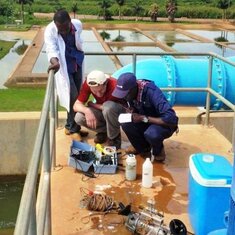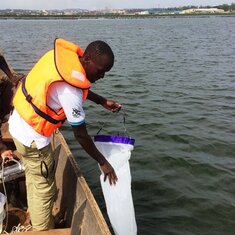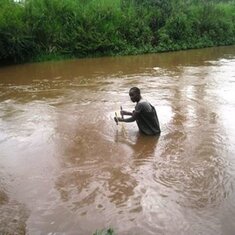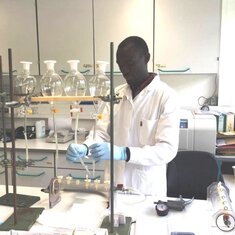Pagecontent
Limnology in Uganda
The Ugandan graduates from the Limnology & Wetland Management Master's Programme (LWM) Nathan Semwanga and Mark Olokotum contributed, in the scope of their final research project, to the achievement of the Sustainable Development Goals (SDGs).
Nathan, for instance, investigated the heavy metal contamination in the Ugandan Rwizi River, to assess safety concerns regarding the quality of water and to estimate possible impacts on the fish living in the river. Mark on the other hand analyzed the occurrence of algal toxins in Murchison Bay and Napoleon Gulf of Lake Victoria, which serve as the main sources of drinkable water for the major cities Kampala and Jinja. In regard to algal toxins, he furthermore studied the cleaning efficiency of the waterworks Gaba III & Walukuba, following the path of the water from the waterworks until its distribution to the consumers.
LWM - truly international
At the end of April 2017, both scientists graduated from the Master's programme. Together with eight other class-mates, Mark and Nathan studied one semester each in Austria (University of Natural Resources and Life Sciences, Vienna), Kenya (Egerton University) and The Netherlands (UNESCO-Institute for Hydrological Education Delft), completing with a seven months lasting research project. Both Nathan and Mark returned to Uganda after graduation, continuing their research to protect the most valuable resource on our planet, water.
The LWM Master's programme is part of a regional focus of the Austrian Development Cooperation (ADC). The support is undertaken by the Austrian Development Agency (ADA), contributing 1.65 million Euros between 2015 and 2018 to the initiative.
The aim is to secure water resources in Eastern Africa for future generations. Science and research make important contributions to ensure sustainable water management and, among others, to provide sound expertise for decision-makers in the region.




